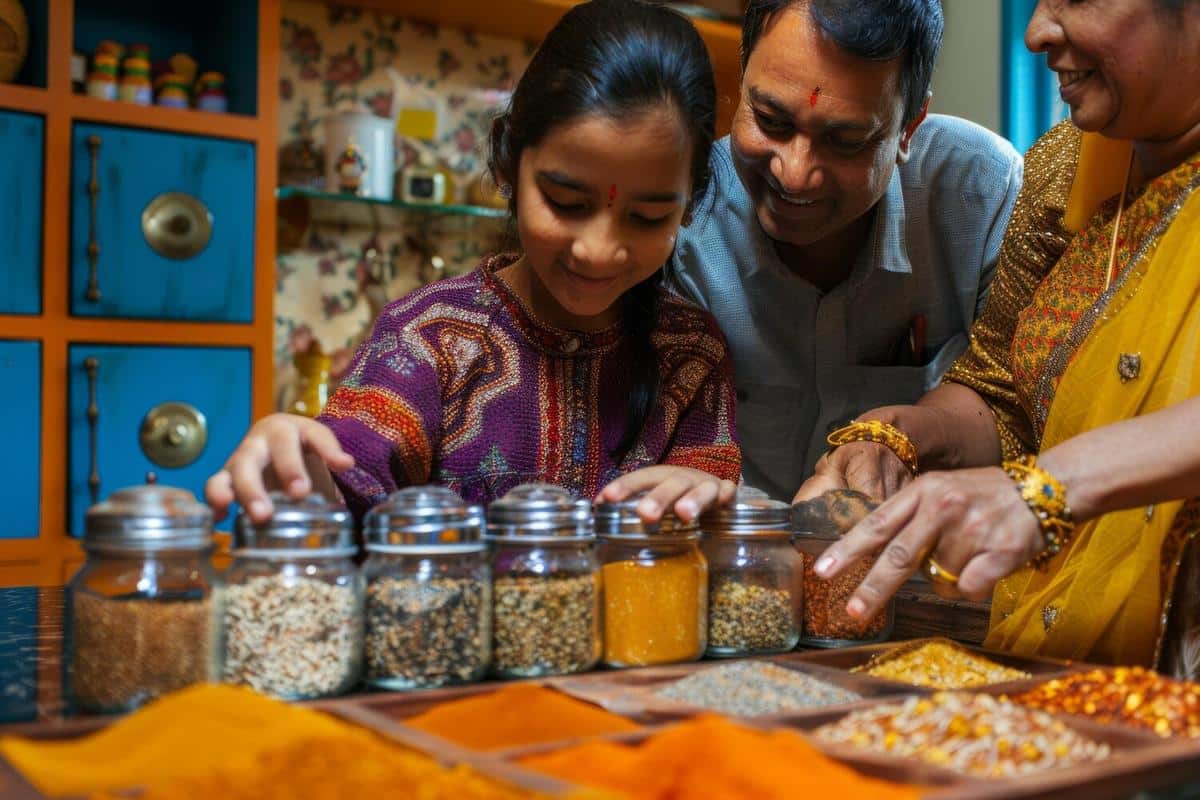
Exploring the Spices of India: A Home Cook’s Guide
Unlocking the rich tapestry of Indian cuisine begins with understanding its vibrant spices, which have been pivotal in shaping the country’s culinary identity. From the fiery heat of chili powder to the warm embrace of cinnamon, these spices offer a sensory journey through India’s diverse regions.
The Essence of Indian Spices
Indian cuisine is renowned for its use of a vast array of spices, each adding unique flavor profiles to dishes. The mastery of these spices is what sets Indian food apart. According to culinary expert Meera Sodha, ‘The secret to Indian cooking is understanding how to balance spices to bring out their best flavors.’
Common Indian Spices and Their Uses
| Spice | Flavor Profile | Common Uses |
|---|---|---|
| Cumin | Earthy, warm | Curries, breads |
| Coriander | Citrusy, sweet | Chutneys, sauces |
| Turmeric | Earthy, bitter | Curry powders, rice dishes |
| Cardamom | Sweet, floral | Tea, desserts |
| Fenugreek | Bitter, nutty | Curry powders, pickles |
| Mustard Seeds | Pungent, spicy | Pickles, tempering |
| Cloves | Sweet, warm | Rice dishes, meats |
| Chili Powder | Hot, pungent | Curries, marinades |
Spice Blends: The Heart of Indian Cooking
While individual spices play a significant role, spice blends like garam masala and curry powder are staples in Indian kitchens. Garam masala, for instance, is a mixture of spices such as cumin, coriander, and cardamom, providing a complex flavor profile to any dish. A study from the Journal of Ethnic Foods highlights how these blends not only enhance taste but also offer health benefits, including anti-inflammatory properties.
Personal Anecdotes: Cooking with Indian Spices at Home
As a home cook, I vividly recall my first attempt at making a traditional Indian curry. The aroma of cumin sizzling in hot oil was the first sign that I was on the right track. It was an olfactory cue that transported my kitchen into the bustling streets of Mumbai. This experience taught me the importance of toasting spices to release their essential oils, a tip echoed by chefs worldwide.
Tips for Using Indian Spices
- Start with small quantities and adjust according to taste.
- Toast whole spices before grinding for enhanced flavor.
- Store spices in airtight containers to preserve freshness.
Conclusion
Exploring the spices of India can transform your home cooking into a culinary adventure. By understanding these spices and their applications, you can create dishes that are not only flavorful but also rich in Indian heritage. Whether you’re a novice or a seasoned cook, the world of Indian spices offers endless possibilities for creativity in the kitchen.
FAQs
What are the essential spices for Indian cooking?
Common essential spices include cumin, coriander, turmeric, and chili powder.
How should I store Indian spices?
Store them in cool, dark places in airtight containers to maintain freshness.